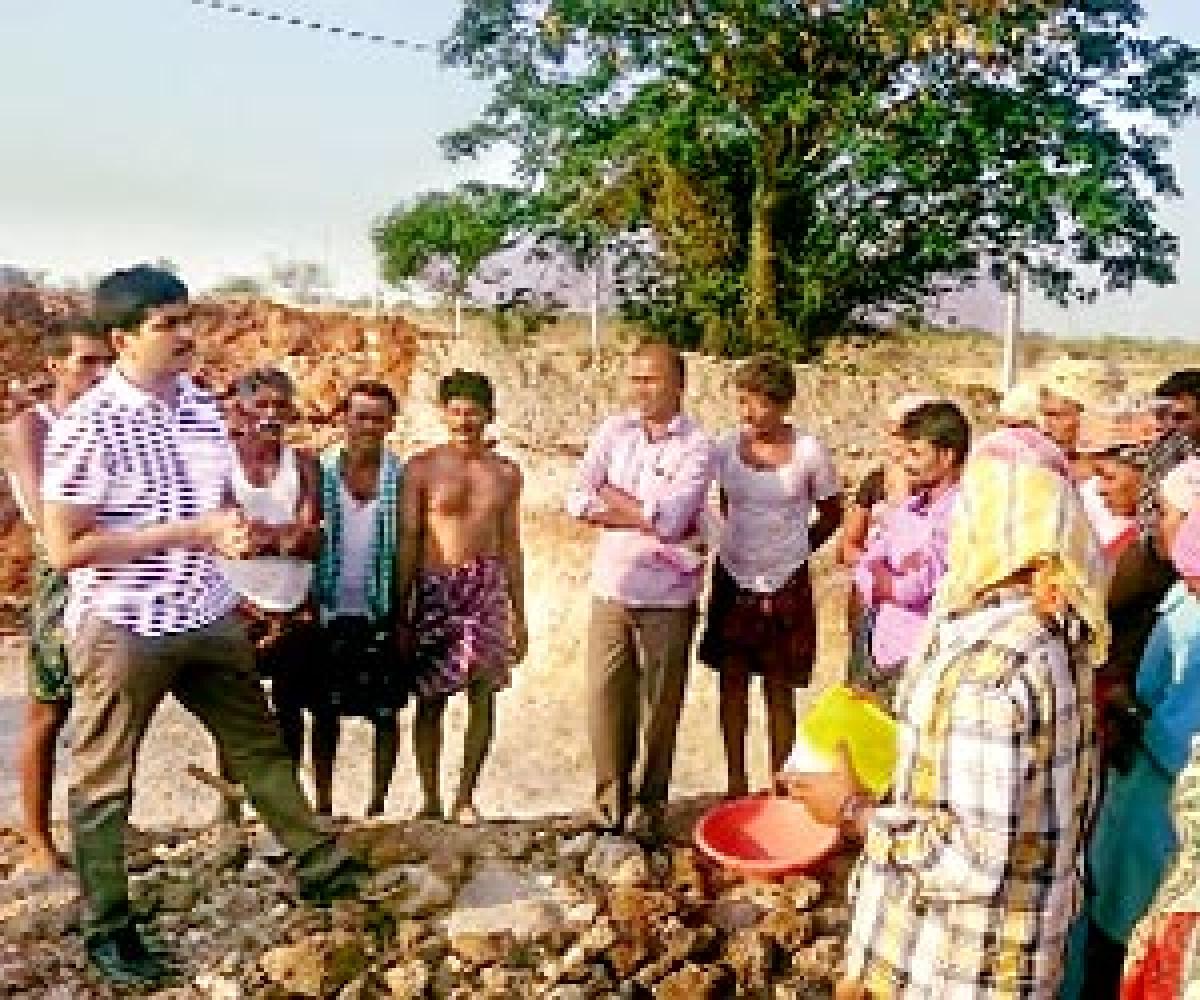Live
- Philippines orders full evacuation amid possible volcanic re-eruption
- Government Prioritizes Welfare of the Poor, says Dola Sri Bala Veeranjaneyaswamy
- Two Russian oil tankers with 29 on board damaged due to bad weather
- Telangana's Traditions Will Be Protected, Village by Village : BRS Leader MLC K. Kavitha
- Uganda to relocate 5,000 households from landslide-prone areas in eastern region
- Harish Rao Criticizes CM Revanth Reddy: "His Time is Over"
- Vijay Sethupathi Hails 'Vidudala-2' as a Theatrical Game-Changer
- Sahaj Yog: A Path to Inner Transformation and Harmony City takes giant strides
- Allu Arjun meets his uncle Nagababu at his residence
- J&K L-G felicitates Langar organisations & NGOs for contribution during Amarnath Yatra
Just In

Mahatma Gandhi National Rural Employment Guarantee Scheme (MGNREGS) under which rural wage labourers have emerged as a
Social, public assets worth hundreds of crores created
Anantapur: Mahatma Gandhi National Rural Employment Guarantee Scheme (MGNREGS) under which rural wage labourers have emerged as a nation-building work force is contributing to creation of social and public assets at the village-level. District Water Management Agency (DWMA) is the force behind the creation of public assets by the socialist work force.
During 2016-17, Rs 54,933 lakh has been spent so far on laying 436 km roads, digging of 1,10,000 farm ponds, 25,000 individual household latrines, 881 Anganwadi buildings, 117 Gram Panchayat buildings, 24 Sthree Shakthi Bhavans, planting one crore saplings as part of social forestry, maintenance of plantations in 30,110 acres, 500 water troughs for cattle, promotion of mulberry plantations in 1,000 acres and in the execution of 31 solid waste management projects in rural areas. An amount of Rs 32,960.15 lakh was spent on payment of wages for labourers and Rs 21,973.43 lakh on material component for execution of works.
MGNREGS, which was once frowned upon as a lazy work force during the days of its inception for its poor productivity, has over the years emerged as a productive work force, realising the twin objectives of creation of work for 100-150 days for rural poor and also for using the work force for creation of social and public assets. Today the work force is being used to cover the entire gamut of public and social works execution, including laying of roads, construction of government and community buildings, desilting of village tanks, digging of farm ponds, trenches, soak pits, tree plantation and maintenance and just anything on earth that has to do with social and community development.
DWMA project director A Nagabhushanam told The Hans India that the wage rate being paid to men and women workers include Rs 194 per day apart from other allowances, which include Rs 19 distance allowance, Rs 3 mate allowance, Rs 5 drinking water allowance, Rs 6.88 buttermilk, Rs 20 distance allowance for the disabled, Rs 10 shade allowance, Rs 5 for basket, Rs 10 for crowbar and Rs 10 for PLM allowance.
The latest dimension to NREGS is creation of hundreds of crores worth public assets, which is turning the scheme all the more beautiful.
District Collector Kona Sasidhar’s resolve to achieve the impossible feat of transforming NREGS work force into a community and nation-building work force and the commitment of DWMA project director Arunakula Nagabhushanam in monitoring of the project through his field visits and motivating the subordinates has brought in sea change in the very character of the scheme.
Nation-wide, it was viewed by wage labourers as a money-spinner. It was merely muster-based with workers hardly doing anything fruitful and that too for a couple of hours. There was wide criticism that the scheme had made rural agriculture labourers lazy. This picture has changed in the district. The NREGS workers are working for six to seven hours a day and the important element of the scheme is community development. Until recently, NREGS workers indulged in futile exercise and unproductive work like digging a pit and closing the pit just for record’s sake that some work has been carried out. The scheme experienced a metamorphosis of doing highly productive work.
Out of 7.86 lakh wage labourers holding job cards, 5.27 lakh have participated in community development works. The heartening aspect of the project is the involvement of 2.6 lakh women workers in the current year.
The district stands today as number one in the implementation of NREGS and also in digging the largest number farm ponds in the State and as well as in the country.
Ravi P Benjamin

© 2024 Hyderabad Media House Limited/The Hans India. All rights reserved. Powered by hocalwire.com







